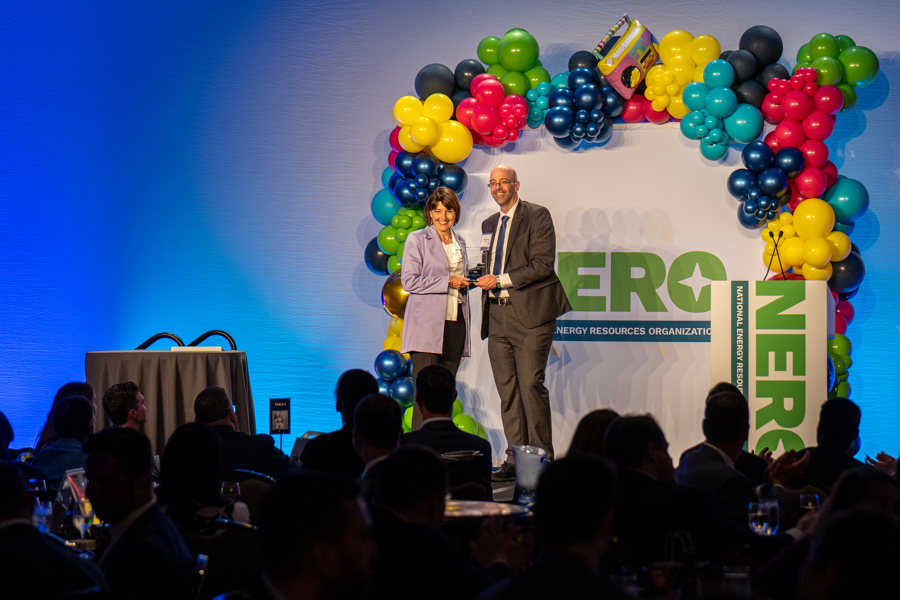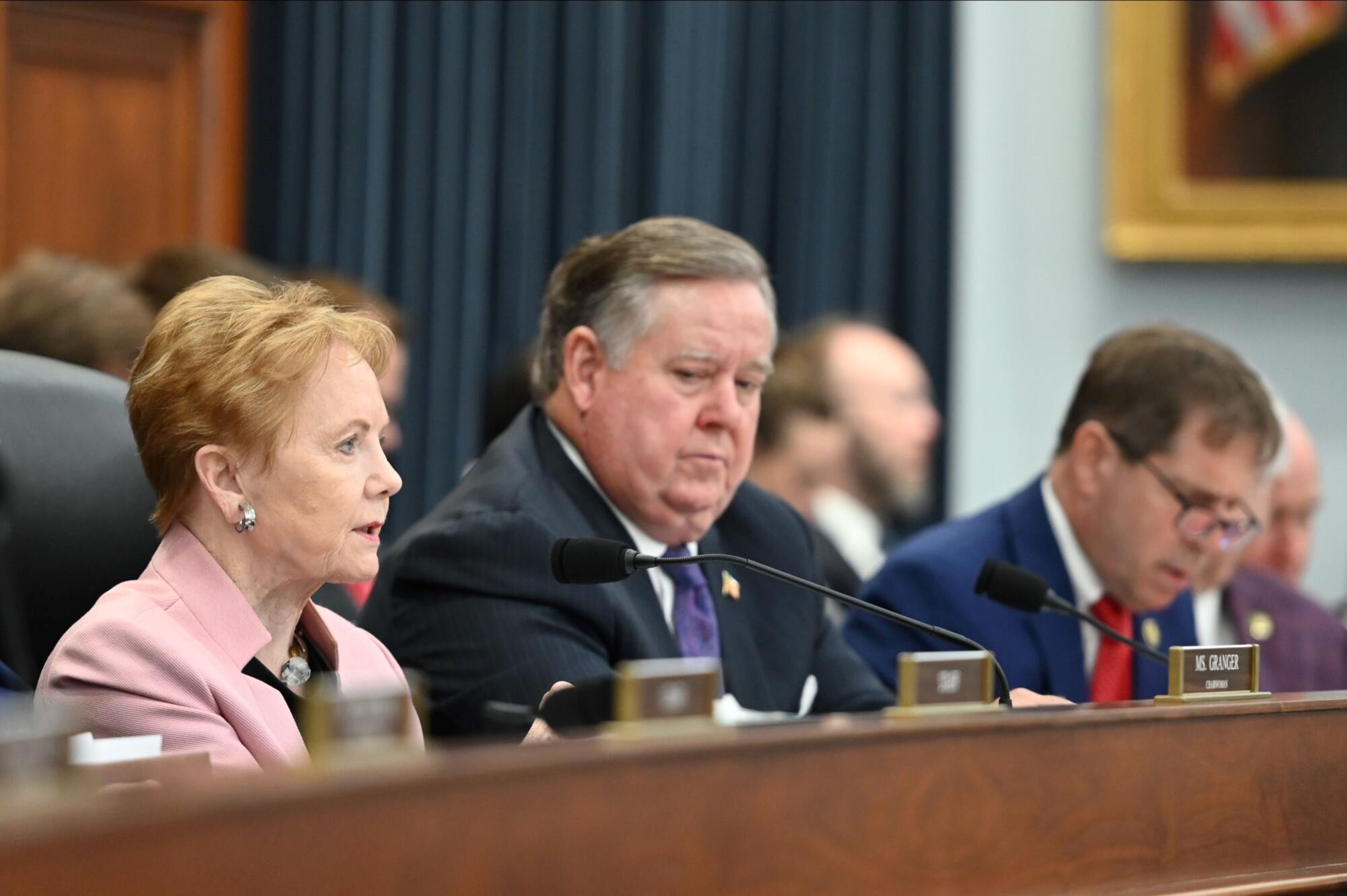Welcome to the July edition of A Capitol View
The Department of Energy is preparing for a second round of funding this summer to strengthen domestic supply chains for electric vehicle batteries, with $3.45 billion still left over from the original $6 billion that was appropriated in last year’s Bipartisan Infrastructure Law.
SMI is uniquely positioned to help clients develop responsive proposals, building on its record of securing five awards in the first round totaling over $800 million.
Dream team: SMI recently brought on a new director, Christopher Michelbacher, a mechanical engineer with years of experience working with DOE on electrification and battery projects.
That follows the hiring earlier this year of VP Samm Gillard, a materials scientist with over a decade of experience in batteries and the materials supply chain at DoE, the Department of Defense, and the U.S. Patent and Trademark Office. Samm was also the primary author of the Biden Administration’s 100-Day Supply Chain Review for High-Capacity Batteries.
Chris and Samm join a veteran energy storage team that includes VP Patrick Davis and VP Drew Ronneberg, who both had long tenures at DOE.
Bids for round two of the battery grants will be due this fall.
Revving up: DOE’s Office of Manufacturing and Energy Supply Chains has announced plans to spend $2 billion on clean vehicle production.
Financing will cover light, medium, and heavy-duty clean vehicles, and awards will range from $25 million to $500 million per project, according to a notice of intent published by the Domestic Manufacturing Conversion Grants Program.
On the job: BlueOval SK, a joint venture between Ford Motors and SK On, a Korean EV battery manufacturer, also received a DOE loan for up to $9.2 billion to build three new battery plants in Kentucky and Tennessee that are expected to bring upwards of 13,000 new jobs.
The jobs will add to the rapid growth in the clean energy sector. The newly released U.S. Energy & Employment Report found the sector outpaced overall job growth in 2022.
On the Hill: SMI Client CALSTART, a non-profit advocacy for clean transportation, also recently presented its EV battery supply chain study in a briefing sponsored by Sen. Catherine Cortez-Masto, a member of the Committee on Energy and Natural Resources.
The study found that the EV battery industry could create up to 800,000 jobs and $150 billion in GDP growth by 2040.
Related: Biden-Harris Administration Announces $192 Million to Advance Battery Recycling Technology, via Department of Energy.
IN THE SPOTLIGHT: SMI VP Jeff Leahey was recognized by the National Energy Resources Organization for his service as a board member and this year’s president. As NERO’s 2023 annual dinner chair, Jeff organized the group’s largest networking event of the year, with over 300 attendees from the energy, Capitol Hill, and federal agencies.
During the event, Leahey presented NERO’s Distinguished Service Award to Rep. Cathy McMorris Rodgers, chair of the Houe Committee on Energy and Commerce, for her leadership on energy issues.
NERO is a non-partisan organization whose mission is to engage in dialogue on energy issues, recognize outstanding achievements, and promote public awareness.
TECH
CHIPS AHOY: The Department of Commerce recently announced plans for additional funding under the CHIPS and Science Act.
The initial funding opportunity released in February has been expanded to include construction, expansion, or modernization of semiconductor facilities with costs exceeding $300 million.
The agency also plans to release two more funding opportunities later this year for proposals that cost less than $300 million, as well as for commercial research and development facilities.
Read more: Funding Opportunity – Commercial Fabrication Facilities GUIDE: Statement of Interest.
Go deeper: The department has also released a vision for success and a related fact sheet about the new opportunities.
For inquiries regarding CHIPS funding opportunities, contact SMI Director Aarzu Maknojia at aarzu@strategicmi.com.
DEFENSE
BULKING UP: The Pentagon’s Industrial Base Policy Office, which has authority over Defense Production Act Title III funding, has been making a slew of awards aimed at decoupling the U.S. from Chinese and Russian supply chains to support Ukraine’s self-defense.
Some big winners: The largest was a $215.6 million award to Aerojet Rocketdyne to support the production and manufacturing of solid rocket motors for a range of projectiles. Other awards include $45 million for Arconic to expand aluminum production; $13.8 million for The Timken Company for ball bearings; and $15 million for Jervois Mining USA to test and drill for cobalt.
The awards are all part of a strategy to bolster the U.S. domestic industrial base using the DPA Title III program to prioritize investment in critical areas.
“The war in Ukraine has exposed a lot of industrial base challenges,” said SMI COO Ken Wetzel. “It is great to see DoD is no longer in reaction mode, but it is looking to build the capacity of the industrial base of the future.”
The funding comes from the $600 million Congress appropriated last summer in the Ukrainian supplemental spending package.
What’s next: Congress and the administration have begun to expand the definition of domestic to close allies like Canada and potentially Australia and the U.K.
BUDGET WARS: The House Appropriations Committee has proposed $826.4 billion for national defense for fiscal 2024, nearly $200 million over the Biden administration’s request and more than three percent above what was enacted for this year.
For example, the bill added $2 billion for research and development programs and nearly $3 billion for operation and maintenance accounts, while stripping nearly $4 billion away from procurement accounts and $953 million for personnel.
Hedging bets: The bill also added $1 billion for the Pentagon’s Defense Innovation Unit to build a “hedge portfolio” to fund emerging military technologies that can be fielded in one to three years.
The provision places a premium on “low-cost, light-logistics multi-domain drones, satellites and munitions; agile communications, compute, and sensor nodes; and artificial intelligence agents and users,” according to the committee’s report.
It could also be used to “create an asymmetric advantage to support combatant command operational challenges like contested logistics, electronic warfare, resilient communications, Joint All-Domain Command and Control, and weapon and platform capacity.”
What’s next: The Democratic-controlled Senate is expected to weigh in later in July and is likely to mark up a very different version.
While there is agreement in both chambers that more funding is needed than President Joe Biden requested, “how the money will be allocated remains a point of contention,” said SMI VP Maria Bowie.
The GOP-controlled House has indicated that extra funding should go to countering China and to secure more votes deeper cuts might be necessary elsewhere, Maria predicts.
“However, this would only widen the disparity with Senate appropriators,” she said. “The two chambers are using spending allocations that are already about $119 billion apart.”
Read more: Uncertainty clouds defense spending forecast, via Roll Call.
UNMET R&D NEEDS: On the policy side, the Senate Armed Services Committee’s version of the FY24 National Defense Authorization Act calls on the Pentagon to outline for Congress its unmet R&D needs, much like the military branches provide committees lists of unfunded weapons priorities.
The bill “requires an annual report on the Department of Defense’s unfunded priorities for research, development, test, and evaluation activities,” according to a summary.
A Cyber Force? The policy bill also calls for an assessment of the feasibility of creating a Cyber Force – whether a new branch of the military or changing the existing force structure dedicated to cybersecurity operations.
SMALL BUSINESS
RETOOLING: Leading defense technology companies and investors have urged Defense Secretary Lloyd Austin to beef up the Small Business Innovation Research awards to expand the Defense Department’s “access to the best commercial innovation.”
New enhancements: SBIR “should be enhanced to generate direct-to-Phase III SBIR grants, enable flexible contract vehicles, and remove existing barriers for small businesses with backing by venture capitalists or publicly traded companies to compete for SBIR grants,” they wrote on June 23.
“The SBIR offices of the Army, Navy, and Marine Corps should pilot a Strategic Funding Increase (STRATFI) program, which includes matched funding from customers and private funding,” the letter added.
‘A good sign’: A new report on SBIR programs from Public Spend Forum unpacks how the funding stream is being applied to critical technology research across federal agencies.
“One interesting finding was that we’re seeing SBIR Phase 2 funding has increased 3 percent, while SBIR Phase 1 funding has stayed about the same,” co-author Raj Sharma told Federal News Network. “…SBIR Phase 1 awards are smaller investments, a lot like what venture capital makes on experiments and prototyping and initial research, and then from Phase 1, you take in technologies or those experiments and say, ‘Okay, can we actually further develop them into Phase 2.’”
“I think that’s a good sign that Phase 2 has grown by 37 percent; that means more of those technologies are being funded to grow and to further develop,” he added.
LOBBYING
LEADING EDGE: SMI is pleased to be named a “standout” in BGov Solutions’ latest roundup of the top D.C. government affairs firms.
We have retained at least 80 percent of our clients over the last year and at least 60 percent over the last three years.
“SMI is grateful to support so many great clients that support our nation’s defense, green energy, and life science priorities,” said President and CEO Bill McCann. “We are grateful that we have long-term and meaningful engagements that serve these national needs.”
NEW HIRES
GROWTH REPORT: In addition to hiring battery storage expert Christopher Michelbacher, SMI has also brought on a seasoned executive assistant, Laura Love, who will be supporting our advocacy work and organizing networking receptions and client-focused events.
FOR YOUR RADAR
GET MOVING: The United States Footwear Manufacturers Association will hold its fall meeting on Wednesday, Oct. 25, at Unifi’s Yadkinville, North Carolina, facility where it has spearheaded its REPREVE manufacturing process.
CLIENTS IN THE NEWS
New Balance plans a new factory in Londonderry, via Union Leader.
LiquidPiston unveils new facility, plans additional hiring, via The Middletown Press.
New data shines brighter light on merits, impacts of SBIR, STTR programs, via Federal News Network.








